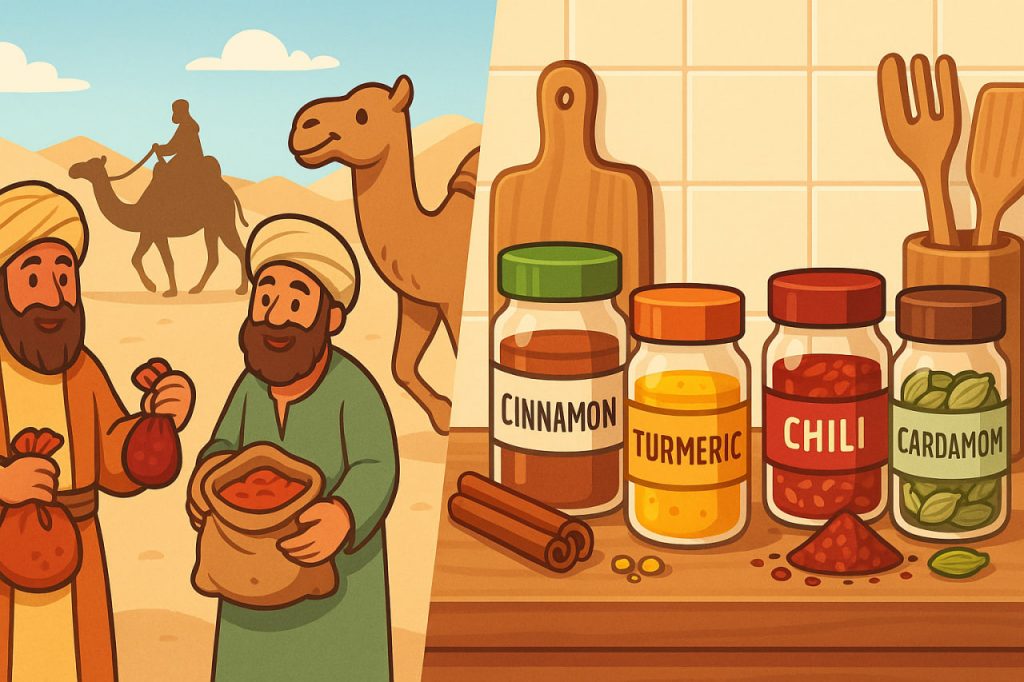Spices are aromatic plant substances that have shaped human culture, trade, and cuisine for thousands of years. Beyond adding flavor and fragrance to food, spices were once more valuable than gold, driving exploration, wars, and the rise of global trade routes. Today, they remain essential in kitchens worldwide while also finding uses in medicine, cosmetics, and preservation.
1. The Origins of Spices
- Spices were first used in ancient civilizations like Egypt, India, China, and Mesopotamia.
- Egyptians used cinnamon and myrrh in embalming rituals and religious ceremonies.
- In India and China, spices such as turmeric, ginger, and cloves were valued both as food flavorings and medicinal remedies.
- The Silk Road and maritime routes spread spices across Asia, the Middle East, and Europe.
2. The Spice Trade and Its Global Impact
- During the Middle Ages, spices like pepper, nutmeg, cinnamon, and cloves became highly prized in Europe.
- The Age of Exploration (15th–17th centuries) was largely fueled by the search for new spice routes. Explorers such as Vasco da Gama and Christopher Columbus sailed in pursuit of direct access to spice-producing regions.
- Control over spice trade routes led to the rise of powerful empires, including the Portuguese, Dutch, and British.
- Some spices were so rare that they served as currency and symbols of status.
3. Spices in Medicine and Culture
- Many spices were used in traditional medicine for their healing properties:
- Turmeric for inflammation.
- Ginger for digestion.
- Cloves for dental pain relief.
- In various cultures, spices played a role in religious rituals, preservation of food, and perfumery.
4. Modern Use of Spices
- Today, spices are globally available, no longer a luxury but a part of everyday cuisine.
- They enhance flavors, preserve food naturally, and provide antioxidants and health benefits.
- The modern spice industry has expanded into nutraceuticals, cosmetics, and pharmaceuticals.
- Global cuisines, from Indian curries to Mexican chili dishes, rely heavily on the rich diversity of spices.
5. The Economic Importance Today
- The global spice market is worth billions of dollars annually, with India remaining the world’s largest producer and exporter.
- Popular spices today include black pepper, cinnamon, ginger, turmeric, cardamom, saffron, and chili.
Conclusion
From ancient temples to modern kitchens, spices have shaped the course of human history. Once rare treasures driving global exploration, they are now everyday essentials, enriching both flavor and health. Their story reflects the journey of human civilization itself — from discovery and trade to culture and science.
Glossary
- Spice trade – historical global commerce centered around valuable spices.
- Silk Road – ancient trade routes connecting Asia and Europe.
- Nutraceuticals – food-derived products with health benefits.
- Antioxidants – compounds that protect cells from damage.
- Curry – a spice-rich dish common in South Asian cuisine.


